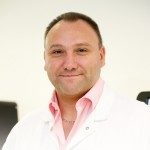Link to Pubmed [PMID] – 10364531
Am. J. Hum. Genet. 1999 Jul;65(1):183-91
Two strategies involving whole-genome association studies have been proposed for the identification of genes involved in complex diseases. The first one seeks to characterize all common variants of human genes and to test their association with disease. The second one seeks to develop dense maps of single-nucleotide polymorphisms (SNPs) and to detect susceptibility genes through linkage disequilibrium. We performed a molecular screening of the coding and/or flanking regions of 36 candidate genes for cardiovascular diseases. All polymorphisms identified by this screening were further genotyped in 750 subjects of European descent. In the whole set of genes, the lengths explored spanned 53.8 kb in the 5′ regions, 68.4 kb in exonic regions, and 13 kb in the 3′ regions. The strength of linkage disequilibrium within candidate regions suggests that genomewide maps of SNPs might be efficient ways to identify new disease-susceptibility genes, provided that the maps are sufficiently dense. However, the relatively large number of polymorphisms within coding and regulatory regions of candidate genes raises the possibility that several of them might be functional and that the pattern of genotype-phenotype association might be more complex than initially envisaged, as actually has been observed in some well-characterized genes. These results argue in favor of both genomewide association studies and detailed studies of the overall sequence variation of candidate genes, as complementary approaches.
